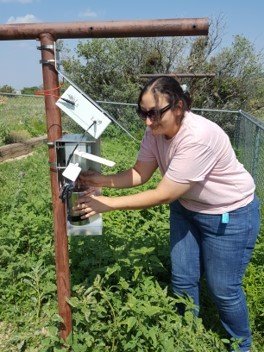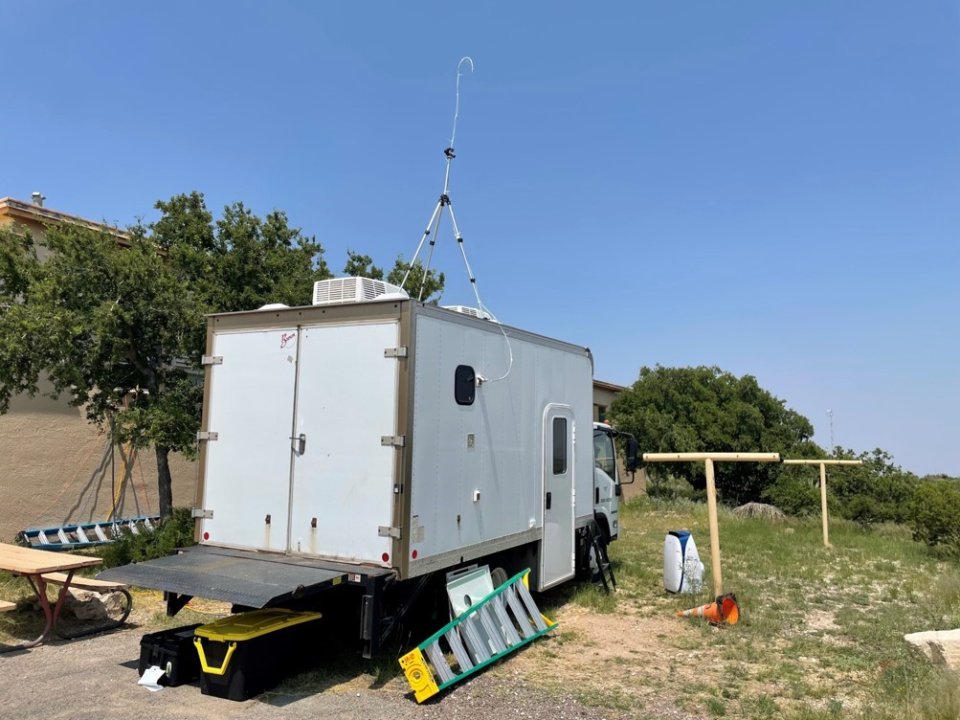Remotely Operated Air Samplers Offer an Innovative Method for Locating Fugitive Emissions

Updated June 24, 2022; Published November 30, 2021
Emissions from industrial smokestacks and other sources, like vehicles, are well-studied and documented point sources of air pollution. But fugitive emissions, or pollution that escapes through unanticipated leaks, industrial processes, and other means, has historically been more difficult for scientists to measure and model.
Now, EPA scientists are collaborating with National Park Service (NPS) and New Mexico Environment Department (NMED) to detect fugitive emissions using a portable, solar-powered air sampling system that can be remotely operated by text message.
The new Remotely Operated Canister Samplers (ROCS) developed by EPA scientists are being piloted in four locations across New Mexico – Hobbs, Carlsbad, Carlsbad Caverns National Park, and Guadalupe Mountains National Park – as part of a regional research effort to help local regulators quantify and identify fugitive air pollution emission sources.
“The southeastern New Mexico region has experienced worsening air quality issues such as elevated ozone levels, over the past few years,” said EPA principal investigator, Ingrid George. “This area is located in the Permian Basin, where oil production has quickly expanded in the past decade.”
Oil production activities can be a significant source of volatile organic compound (VOC) emissions that can lead to ozone formation, George explained. The ROCS offer a simple, cost-effective measurement tool that can be used by states, regions, local agencies, or communities for a range of potential air monitoring uses.
“The ROCS are simple and effective tools for locating VOC sources and better understanding their regional air quality impacts,” George said. “They can be operated as stand-alone systems or coupled with other measurement tools, like low-cost sensors, to collect optimized canister samples based on specific target conditions, such as detection of a fugitive emissions event or certain wind direction.”

The ROCS can be set up in a few minutes and are easy to operate. Each ROCS is equipped with a modem so that it can receive commands to start sample collection. The commands are sent from the user by text message.
The ROCS can be set up along the fence line of a specific area – like an industrial facility, oil and gas operation, rail yard or port – to remotely collect a whole air canister sample over a short period of time. These samples give scientists detailed information about VOC composition in the air to help them identify a specific source of fugitive emissions.
In spring 2021, NMED and NPS began operating the ROCS at several state and federal air monitoring sites across southeastern New Mexico and provided logistical field support throughout the project to conduct sampling. In summer 2021, project collaborators from Colorado State University and NPS also operated a mobile lab in Carlsbad Caverns National Park equipped with advanced air measurement instruments to monitor for a wide range of ozone precursors as part of a five-week summer measurement campaign that ended in early August.
“The NPS and NMED collaborators were key to the success of this research project,” George noted. “They brought a deep understanding of the local air quality that has informed this effort.”
Detecting and halting fugitive emissions quickly is valuable, as it can create safer working environments, provide cost savings for industries by reducing product loss, reduce air pollution, and improve public health protection.
“Information generated from this project will give the region, state, and NPS a greater understanding of the contributions of oil and gas activities and other regional sources to ozone pollution in the southeastern New Mexico area,” George concluded. “We will also have more information on the utility of the ROCS as a new cost-effective air monitoring tool for states and regions and how the tool can be further improved for future air monitoring efforts.”
Scientists completed ROCS sampling in September 2021. They are currently working on analyzing the data to produce a final dataset relating VOC concentrations measured in Carlsbad during the summer of 2021. Several future journal publications will share results of ozone precursor measurements taken in the Permian Basin during the mobile lab campaign and ROCS deployment.
